Every year, countless mammals embark on long and often perilous journeys across international borders in search of food, breeding grounds, or more favorable climates. These migrations, essential for their survival, also play a crucial role in maintaining the health of ecosystems. Each species faces unique challenges along its routes, and these migrations not only sustain animal populations but also influence the environments they pass through, connecting diverse habitats across continents.
Blue Wildebeest (Connochaetes taurinus)
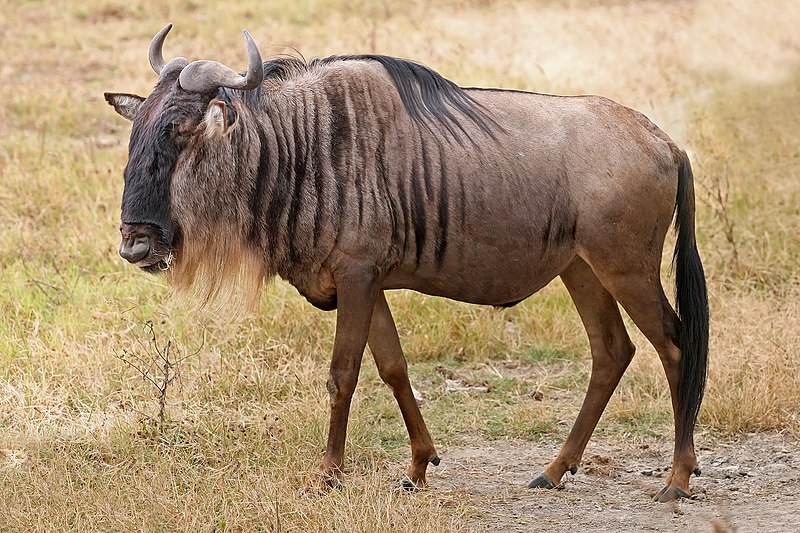
The blue wildebeest embarks on a vast migration across the Serengeti plains in Tanzania and Kenya, forming one of the most iconic wildlife spectacles in Africa. Each year, over 1.5 million wildebeest migrate in search of fresh grazing lands, driven by seasonal rains. Their journey covers over 800 miles, forming a continuous loop that moves through the Serengeti to the Maasai Mara. These ungulates cross the Mara River, where they often face predation from crocodiles. This migration plays a crucial role in the ecosystem, as their movement replenishes soil nutrients and creates habitats for other species. It aligns with their breeding season, and calves are born during this time, standing within minutes to join the journey. They travel with other migratory species, like zebras and gazelles, creating a complex and balanced system of movement. Climate change and human interference pose increasing threats to this migration, particularly with habitat fragmentation impacting traditional routes.
Caribou (Rangifer tarandus)
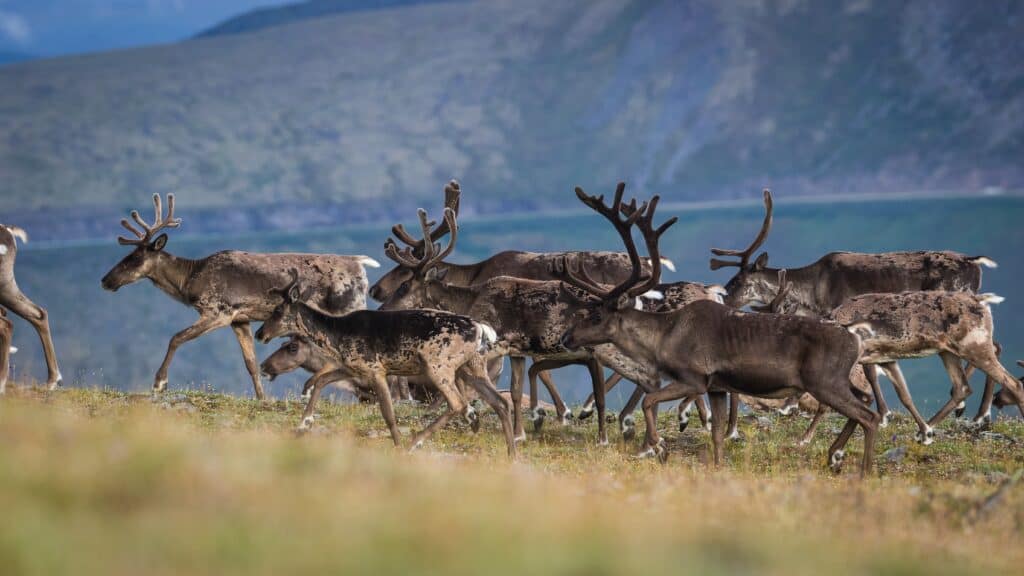
Caribou, also known as reindeer, undertake one of the longest terrestrial migrations, spanning over 3,000 miles annually. They migrate between the Arctic tundra, where they give birth, and the boreal forests further south, where they spend winter. This journey is essential for accessing seasonal food sources, with lichens being their primary diet in winter and fresh grasses in summer. The herds’ large hooves enable them to traverse snowy landscapes and swim across rivers. Their migration also influences the ecosystem, benefiting predators like wolves and bears. In recent years, climate change has disrupted their migratory patterns, with rising temperatures altering food availability and causing habitat degradation. Conservation efforts are crucial to maintain these migratory paths, as their populations are declining in certain regions.
Northern Elephant Seal (Mirounga angustirostris)
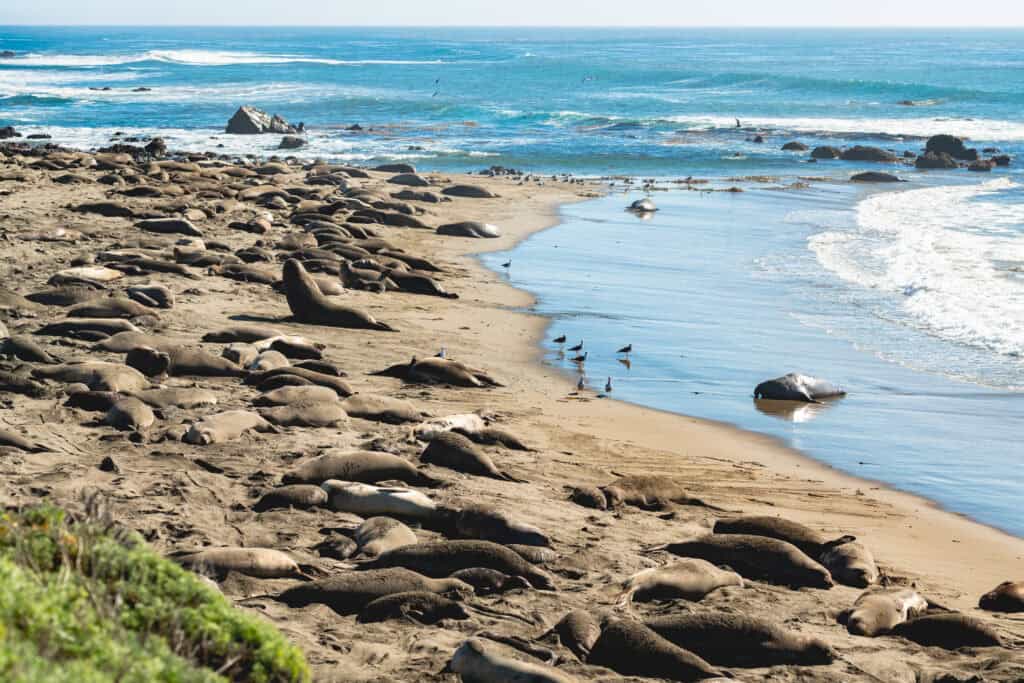
The northern elephant seal undertakes two migrations each year, one for feeding and one for breeding, covering thousands of miles across the North Pacific. Males and females have distinct feeding grounds, with males migrating to the Gulf of Alaska, while females head to the southern U.S. coast. These seals breed along the beaches of California and Baja California, with massive congregations during the winter. Their migration is largely driven by the need to find rich feeding areas, as they dive to great depths, sometimes over 5,000 feet, in search of squid and fish. After the breeding season, they return to the ocean for a second migration, during which they molt their fur. They are particularly vulnerable to threats like entanglement in fishing gear and the impacts of climate change, which may disrupt their migratory cycles.
Humpback Whale (Megaptera novaeangliae)
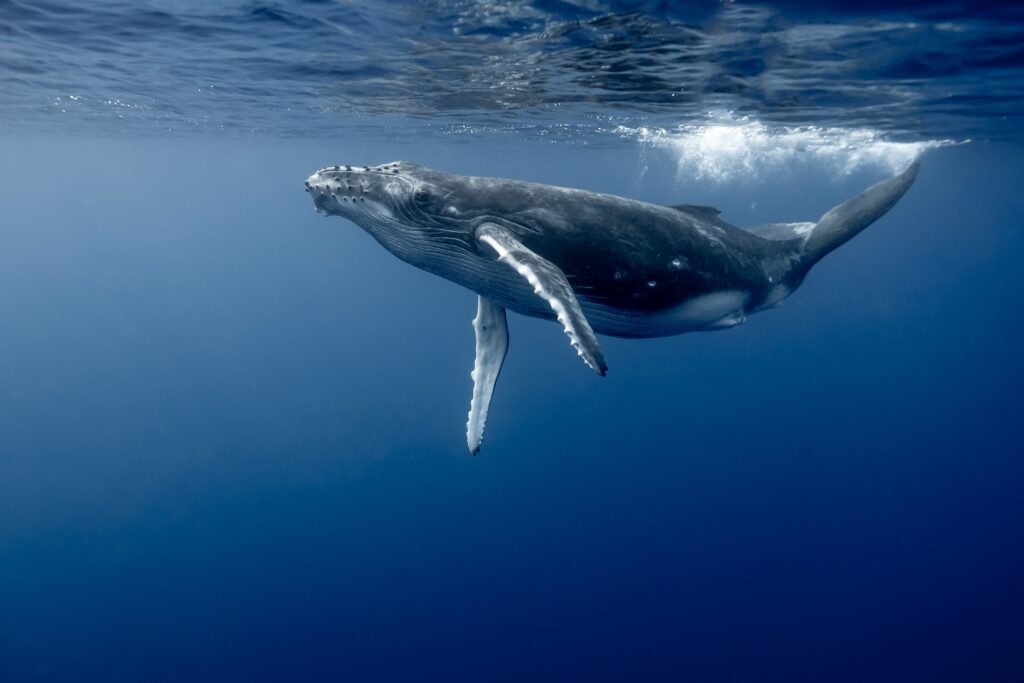
Humpback whales are known for their long-distance migrations, traveling up to 5,000 miles from their feeding grounds in polar waters to tropical breeding grounds. In the North Pacific, they migrate from Alaska to Hawaii, while other populations travel from the Southern Ocean to the coasts of Central America. These migrations are closely linked to their breeding and feeding cycles, as they feast on krill and small fish in nutrient-rich cold waters before heading to warmer seas to give birth. Humpback whale songs are a prominent feature of their migration, with males singing complex melodies to attract mates. Despite their size, they face threats during migration, including ship strikes and entanglement in fishing nets. Their migratory patterns also help to circulate nutrients within marine ecosystems, supporting a wide variety of sea life.
Florida Manatee (Trichechus manatus latirostris)
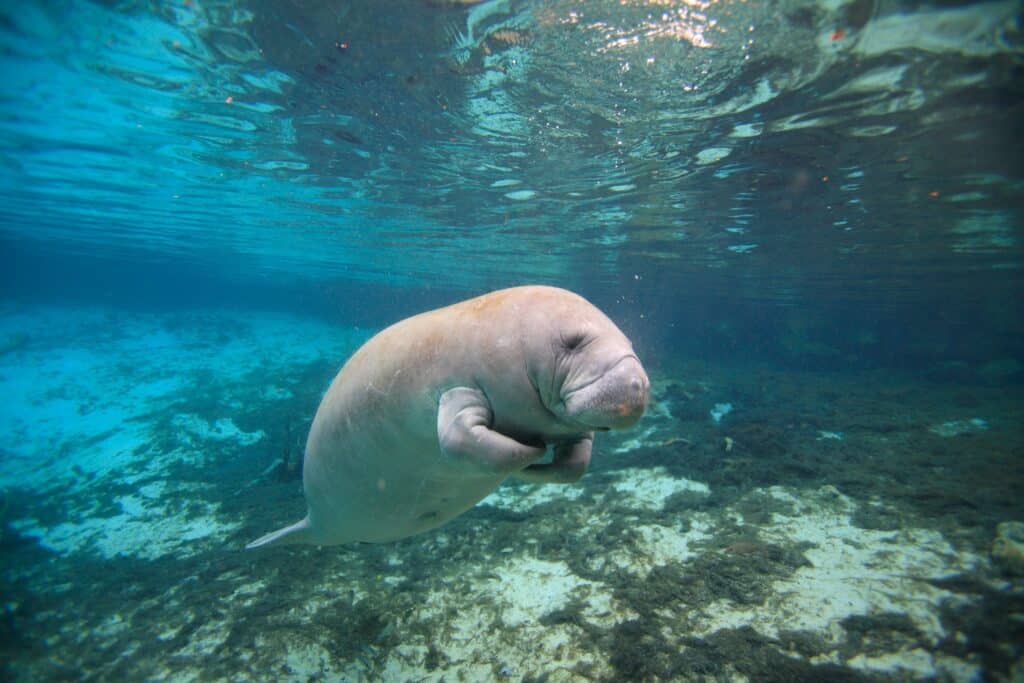
The Florida manatee, a subspecies of the West Indian manatee, migrates seasonally along the coastlines of Florida and into neighboring states. During the winter, they seek out warm waters, such as natural springs or power plant outflows, as they cannot tolerate temperatures below 68°F (20°C). In the summer, they may travel as far north as Massachusetts, though most remain along the southeastern coast of the U.S. This migration is vital for their survival, as cold stress can be fatal to these gentle giants. They primarily feed on seagrasses and other aquatic vegetation, which grow abundantly in their migratory habitats. Human activities, such as boat collisions and habitat loss, pose significant threats to manatees during their migration. Conservation measures, including speed zones and protected areas, are helping to safeguard these unique marine mammals.
Bearded Pig (Sus barbatus)
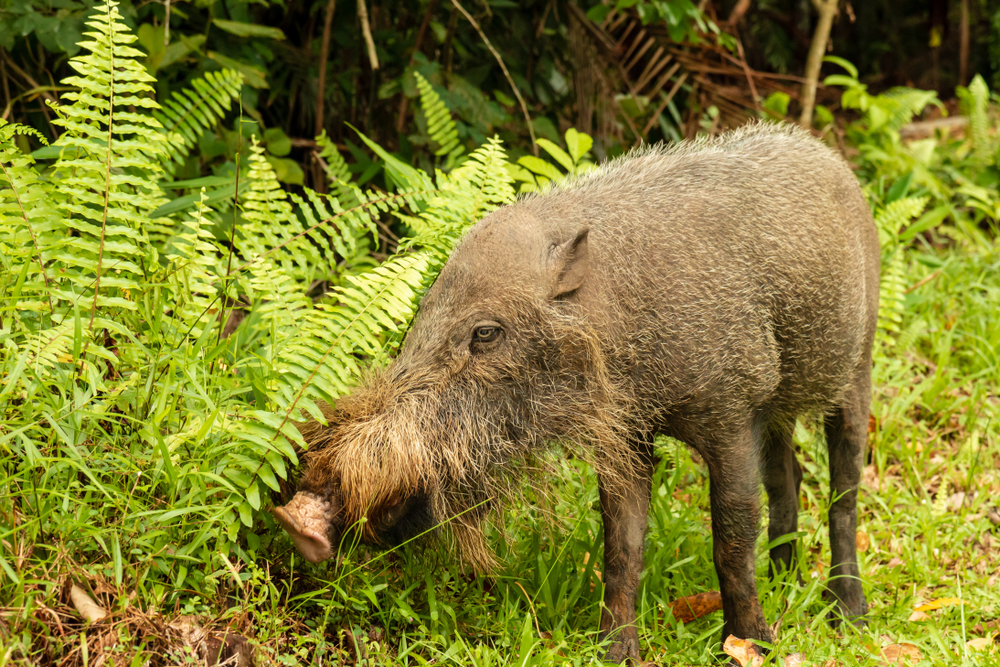
The bearded pig is a unique migratory mammal found in the rainforests of Borneo, Sumatra, and parts of the Malay Peninsula. They migrate in response to the fruiting patterns of trees, particularly during mast-fruiting events when large amounts of food become available at once. Their migrations can cover distances of up to 380 miles, with large groups traveling together through the forest in search of food. This movement plays an important ecological role, as the pigs help disperse seeds and support forest regeneration. During their migration, bearded pigs rely on macaques and other animals that drop fruits from trees. Habitat loss due to deforestation and agricultural expansion has severely impacted bearded pig populations, making their migratory behavior more erratic. Conservation efforts are focused on protecting their habitats and maintaining the natural cycles that drive their migrations.
Pronghorn Antelope (Antilocapra americana)
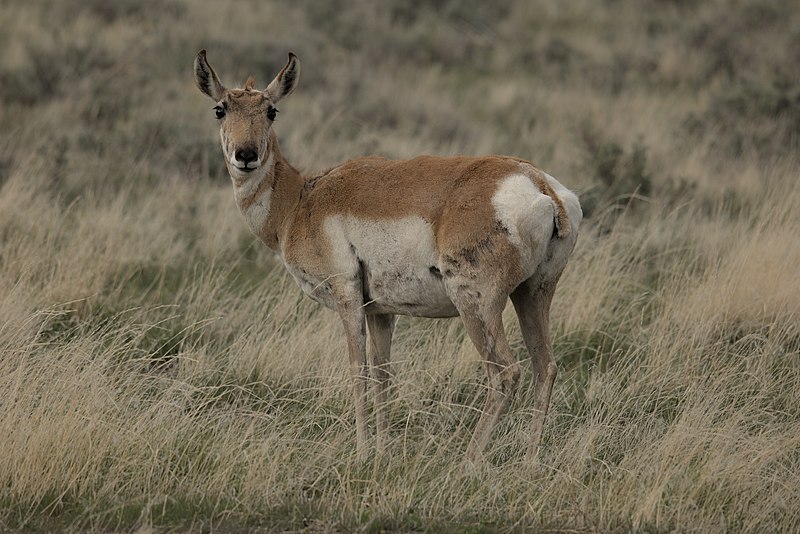
The pronghorn antelope is known for its incredible speed and endurance, making one of the longest terrestrial migrations in North America. These animals travel up to 300 miles annually, moving between their summer ranges in Wyoming and Montana to their wintering grounds further south. They migrate to escape harsh winters, where snow can cover their food sources, such as grasses and shrubs. Unlike many migratory species, pronghorns do not rely on a single corridor but instead use multiple pathways across the landscape. This migration is increasingly threatened by human development, such as roads, fences, and energy infrastructure, which fragment their migratory routes. Conservationists are working to create wildlife crossings and remove barriers to ensure that pronghorns can continue their migrations.
Grey Whale (Eschrichtius robustus)
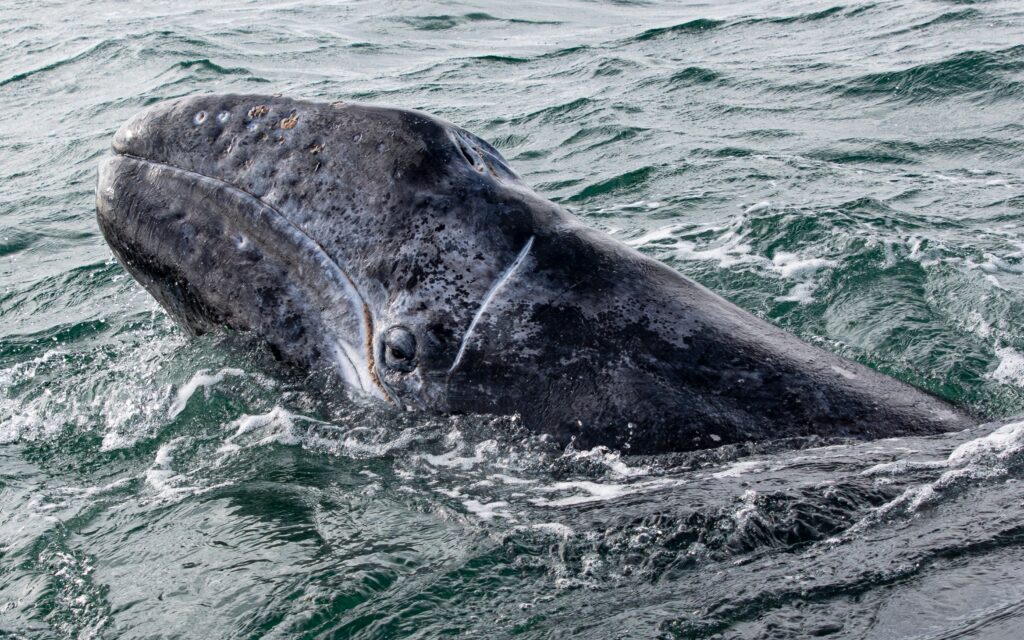
Grey whales undertake one of the longest migrations of any mammal, covering up to 14,000 miles annually. These massive creatures travel between the cold feeding grounds in the Bering and Chukchi Seas to the warmer waters of Baja California, Mexico, where they give birth. The journey is especially perilous for calves, as they are vulnerable to predators like orcas along the way. They rely on shallow coastal waters for navigation and safety during migration. These waters provide refuge from deep-sea predators and allow the whales to stay close to food sources, such as benthic crustaceans. Their long migration plays a critical role in the health of marine ecosystems by redistributing nutrients. Climate change and human activities, like ship traffic and noise pollution, pose significant threats to their migratory patterns. Protecting these migratory corridors is essential for the continued survival of grey whale populations.
Red Bat (Lasiurus borealis)
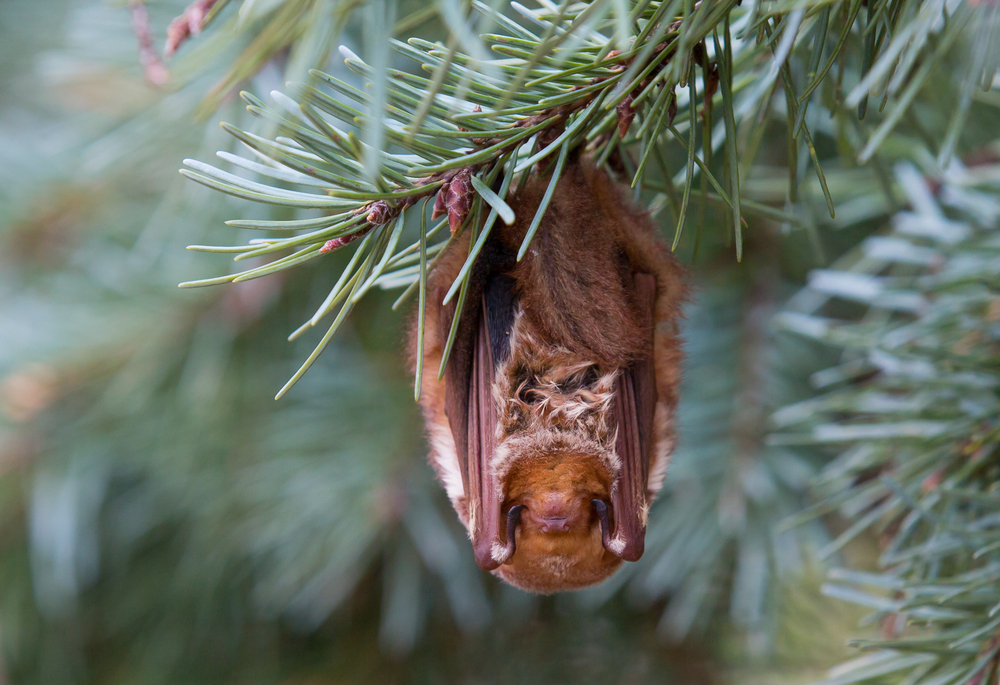
The red bat, a small migratory mammal, travels long distances in search of favorable temperatures throughout North America. They are particularly sensitive to cold and migrate to warmer regions during the winter months. They hibernate in trees, often blending into the foliage with their reddish-brown fur. Red bats primarily feed on insects, which become scarce in colder climates, necessitating their southward migration. Their journey can cover several hundred miles, with some populations staying in the southern U.S. year-round. They also migrate to avoid freezing temperatures that could impair their ability to survive and reproduce. Habitat loss and climate change are increasingly impacting their migratory behavior, threatening populations in some regions.
Bottlenose Dolphin (Tursiops truncatus)
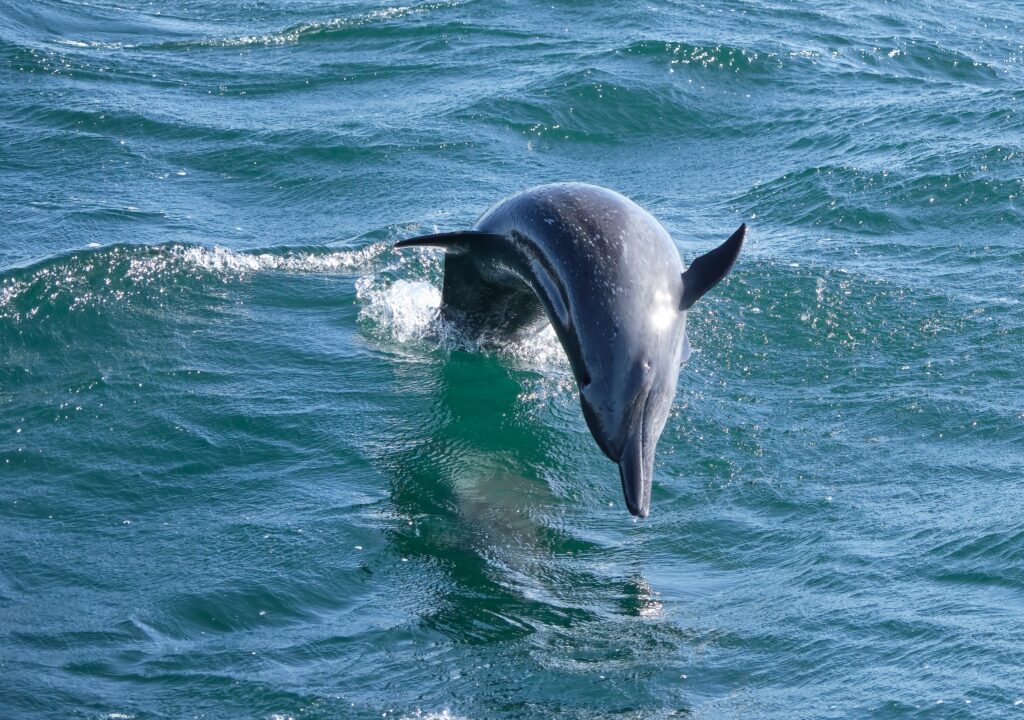
Bottlenose dolphins are known for their high intelligence and complex social structures, but they are also migratory animals. They travel seasonally along the coasts of the Atlantic and Pacific Oceans, primarily driven by water temperature and food availability. They migrate to warmer waters during the colder months, following schools of fish, their primary food source. Migration routes can vary significantly depending on the population, with some dolphins traveling hundreds of miles, while others may stay within a smaller range. These migrations are critical for maintaining the health of dolphin populations, as they ensure access to food throughout the year. In addition to environmental factors, human activities, such as fishing and pollution, can disrupt their migratory patterns. Protecting marine ecosystems is essential to safeguard these important migrations.
Sperm Whale (Physeter macrocephalus)
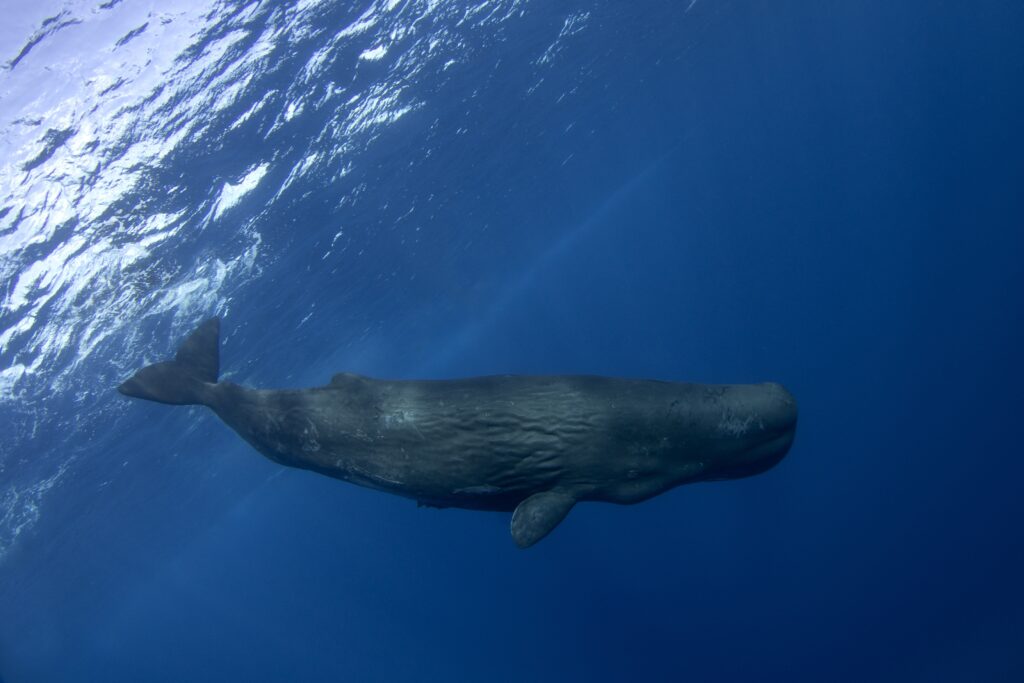
Sperm whales are deep-diving marine mammals that undertake long migrations across the world’s oceans in search of squid, their primary prey. Male sperm whales migrate alone or in small groups to polar regions for feeding, while females and calves typically remain in tropical and subtropical waters year-round. They are capable of diving to depths of over 3,000 feet and can stay submerged for up to two hours. Their migration is influenced by the availability of prey, as well as reproductive needs. Males return to warmer waters to breed with females before heading back to colder feeding grounds. Their migrations play a crucial role in the marine food web, as they help regulate squid populations and contribute to nutrient cycling in the ocean. However, their long migrations expose them to threats like ship strikes and entanglement in fishing gear.
African Elephant (Loxodonta africana)
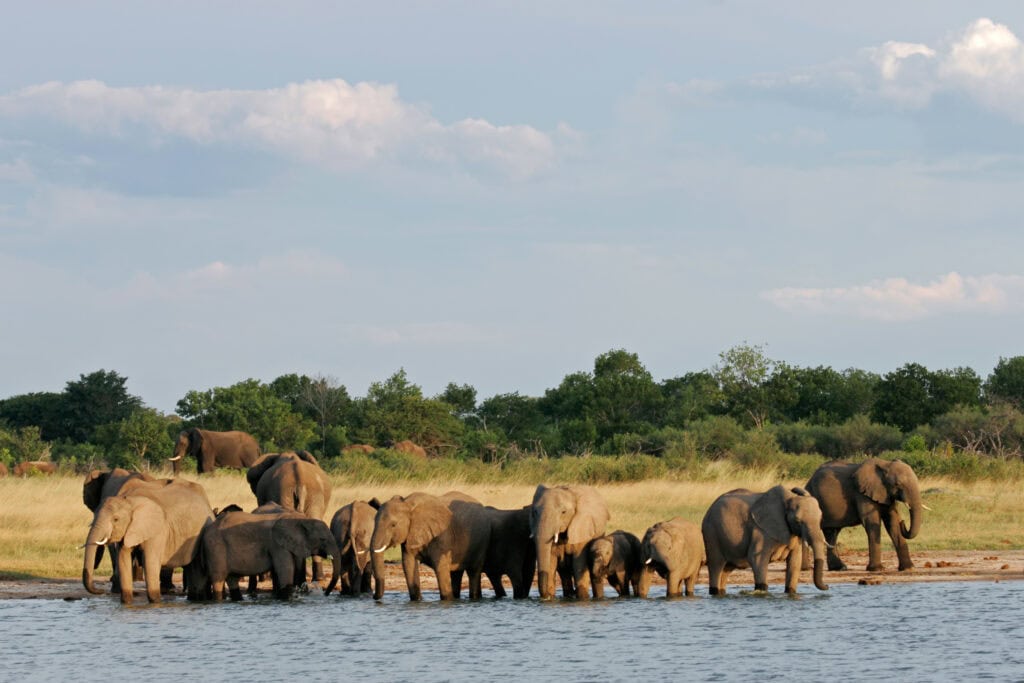
African elephants are known for their intelligence, complex social structures, and long migrations across the savannas and forests of Africa. These migrations are primarily driven by the search for water and food, especially during the dry season. They travel across international borders, moving between countries like Kenya, Tanzania, Botswana, and Zambia, depending on the availability of resources. Their migrations are essential for maintaining the health of ecosystems, as they help disperse seeds and create pathways through dense vegetation. They are also highly social animals, migrating in family groups led by a matriarch. Unfortunately, habitat loss, human-wildlife conflict, and poaching pose significant threats to their migratory routes. Conservation efforts, such as creating transboundary protected areas, are crucial for ensuring the survival of these iconic mammals.
Snow Leopard (Panthera uncia)
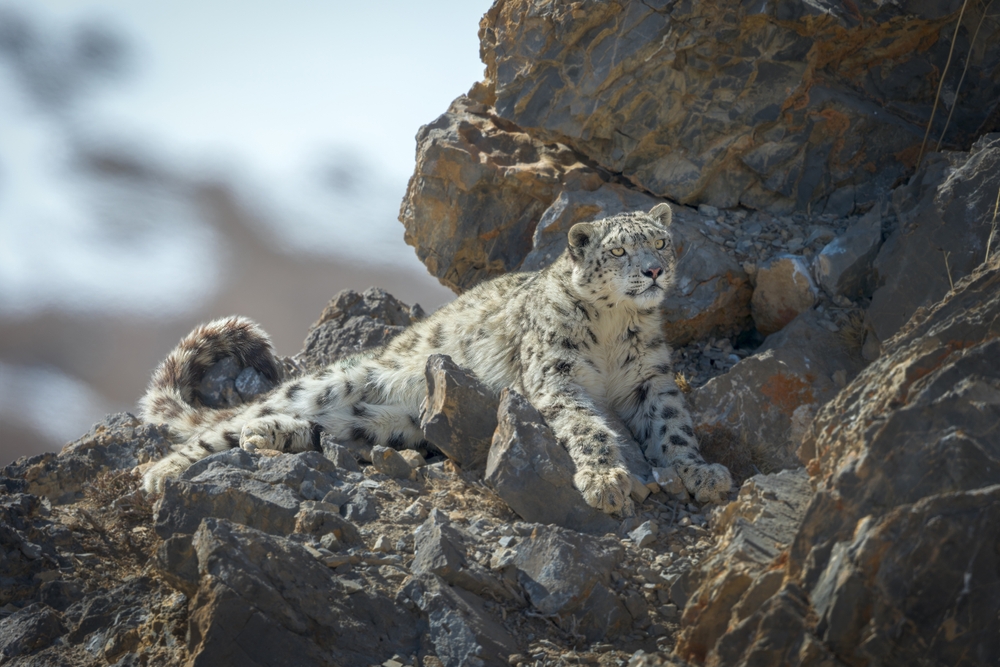
Snow leopards are elusive big cats that inhabit the rugged mountain ranges of Central Asia, including the Himalayas, Altai, and Tian Shan mountains. Although not traditionally thought of as migratory, snow leopards undertake seasonal migrations in response to the availability of prey. During the harsh winter months, they descend to lower altitudes where their prey, such as ibex and blue sheep, are more abundant. In the summer, they migrate back to higher altitudes where the cooler temperatures are more suitable for hunting. This vertical migration helps snow leopards survive in some of the most challenging environments on Earth. The migration also ensures that they can access enough food to support themselves and their offspring. They face numerous threats, including habitat fragmentation and poaching, which disrupt their migration patterns and threaten their populations.
This article originally appeared on Rarest.org.
More from Rarest.org
15 Most Breathtaking Waterfalls on Earth
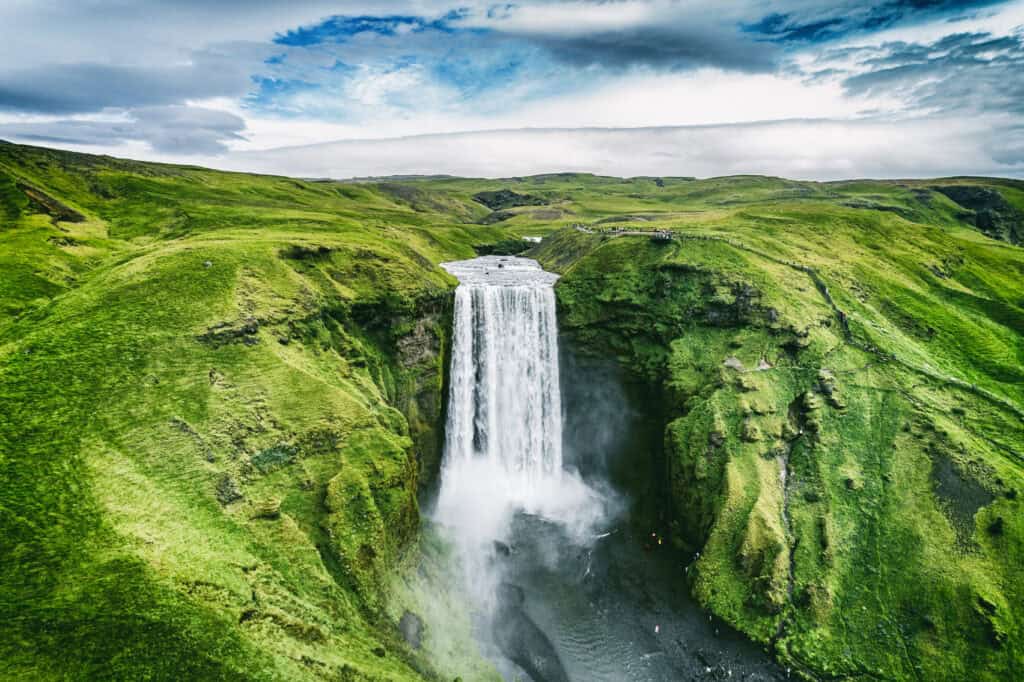
Waterfalls captivate with their sheer power and beauty. They offer breathtaking views and a chance to connect with nature. Here’s a look at some of the most stunning waterfalls around the globe. Read More.
14 Most Beautiful Beaches in the Mediterranean
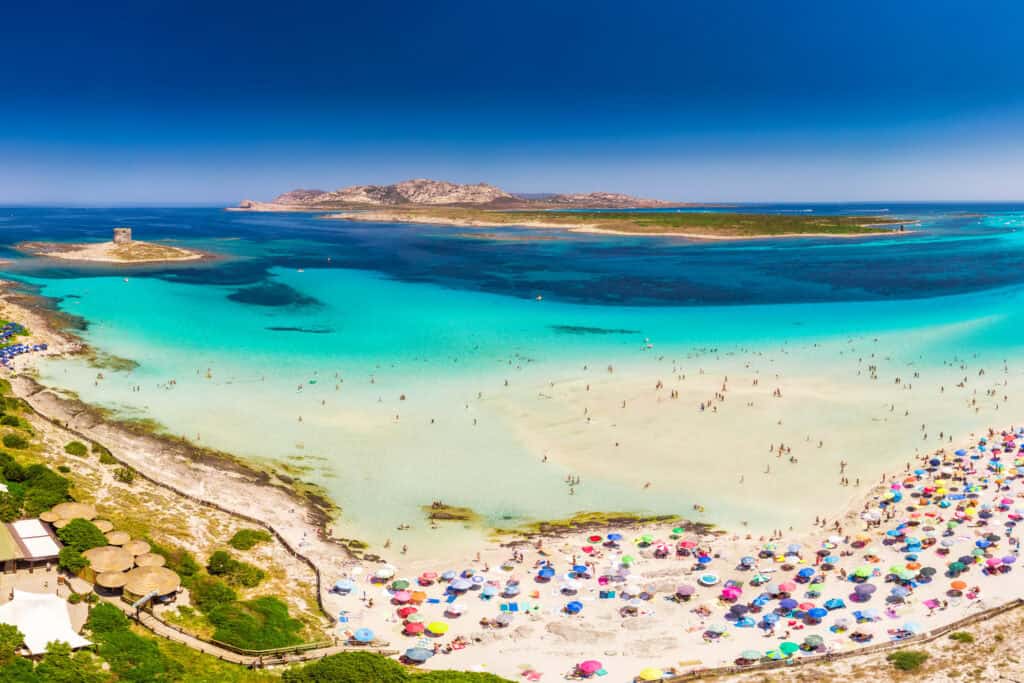
The Mediterranean is home to some of the world’s most stunning beaches, each offering unique beauty and charm. From the pristine white sands of Greece to the glamorous shores of the French Riviera, these beaches boast crystal-clear waters, dramatic landscapes, and a perfect blend of relaxation and adventure. Read More.
8 Treasured Vintage Perfume Bottles and Their Values

Vintage perfume bottles are more than containers; they are pieces of art. Collectors and enthusiasts treasure these relics for their craftsmanship and history. Read More.
